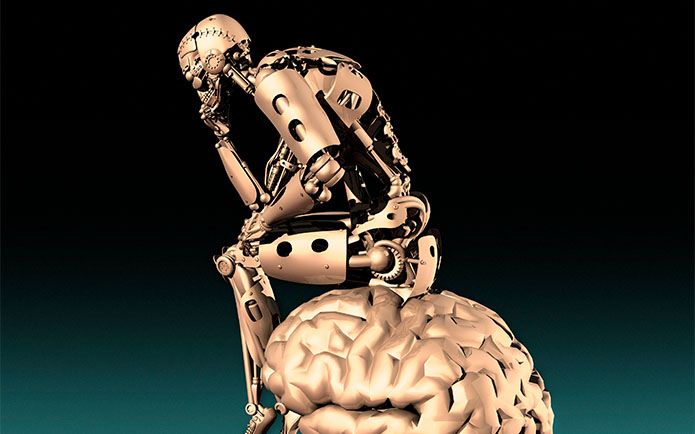In the rapidly evolving landscape of technology, artificial intelligence (AI) has emerged as a transformative force with the potential to reshape industries, streamline processes, and enhance human lives. However, this powerful tool is not immune to the flaws that can plague human creations. One of the most pressing challenges facing AI today is bias. Bias in AI algorithms, often stemming from the data used to train them, has far-reaching implications for society, from reinforcing existing inequalities to compromising the fairness of decision-making processes. In this article, we delve into the critical issue of bias in AI algorithms, its consequences, and strategies for building fair and unbiased AI systems.
Understanding Bias in AI Algorithms
Bias in AI algorithms refers to the presence of unfair, skewed, or discriminatory outcomes in the decisions made by AI systems. This bias can manifest in various ways, such as favoring certain demographics over others, reinforcing stereotypes, or producing inaccurate results for specific groups. Bias in AI is not a result of the technology itself having personal opinions or beliefs, but rather a reflection of the biases present in the data that the AI learns from.
AI algorithms learn patterns and associations from data provided during their training phase. If the training data is unrepresentative or contains societal biases, the algorithm can inadvertently perpetuate those biases in its predictions and decisions. For instance, if a facial recognition system is trained primarily on images of lighter-skinned individuals, it might struggle to accurately recognize or categorize people with darker skin tones.
Consequences of AI Bias
The consequences of AI bias are far-reaching and can impact various aspects of society:
- Reinforcement of Inequalities: Biased AI algorithms can perpetuate existing inequalities by disproportionately affecting marginalized or underrepresented groups. This can occur in domains like lending, hiring, and criminal justice, where biased algorithms may lead to unjust outcomes for certain demographics.
- Undermining Trust: As AI systems become more integrated into daily life, bias-related incidents can erode public trust. People are less likely to trust AI-driven decisions if they perceive them as unfair or discriminatory.
- Missed Opportunities: Bias can lead to missed opportunities for innovation and progress. If AI systems consistently overlook certain groups or fail to understand their needs, these groups may be excluded from the benefits of technological advancements.
- Legal and Reputational Risks: Organizations deploying biased AI systems could face legal challenges and damage to their reputation. Discriminatory AI outputs could result in lawsuits, fines, and public backlash.
Strategies for Building Fair and Unbiased AI Systems
Addressing bias in AI algorithms requires a multipronged approach involving technology, data, and human oversight:
- Diverse and Representative Data: To mitigate bias, AI systems must be trained on diverse and representative datasets. This entails collecting data that accurately reflects the real-world diversity of the population the AI will interact with.
- Preprocessing and Data Cleaning: Data should be thoroughly examined and preprocessed to identify and rectify biases. Biased or unrepresentative data points should be either corrected or removed.
- Algorithmic Auditing: Regular audits of AI algorithms can help identify bias in their outputs. Independent auditors can analyze the algorithm’s decision-making processes and recommend necessary adjustments.
- Explainable AI (XAI): Implementing XAI techniques allows AI systems to provide understandable explanations for their decisions. This transparency can help detect and rectify biased outcomes.
- Human Oversight: Human experts should be involved in the development and deployment of AI systems. Their domain knowledge and ethical insights can contribute to identifying and rectifying bias.
- Continuous Monitoring and Feedback Loops: AI systems should be continuously monitored for bias even after deployment. Feedback loops should be established to address biases that emerge in real-world scenarios.
- Ethics Training: AI developers and data scientists should receive training in ethics and bias awareness. This will sensitize them to potential biases and encourage conscious decision-making during the development process.
The Path Forward
As AI technologies become increasingly integrated into our lives, addressing bias in AI algorithms becomes an ethical imperative. The responsibility to create fair and unbiased AI systems rests on the shoulders of developers, researchers, policymakers, and society as a whole. By acknowledging the existence of bias, committing to transparent practices, and implementing the strategies outlined above, we can pave the way for AI that respects the principles of equality, justice, and fairness.
In conclusion, while bias in AI algorithms presents a complex challenge, it is a challenge that can be overcome through collective efforts. By striving to eliminate bias, we not only enhance the effectiveness and reliability of AI systems but also contribute to a more equitable and just society.
Case Studies in Bias Mitigation
Several notable cases highlight both the potential consequences of AI bias and the efforts to mitigate it:
- Criminal Justice Algorithms: AI systems used in criminal justice, such as risk assessment tools for predicting recidivism, have faced criticism for perpetuating bias. These systems sometimes exhibit racial disparities, leading to unfair sentencing. Researchers and advocates are pushing for increased transparency, accountability, and audits to rectify these biases.
- Gender and Hiring: Bias in hiring algorithms has been a significant concern. Some AI-driven hiring tools have been found to favor male candidates over female candidates, reinforcing gender stereotypes. Companies are now focusing on refining their algorithms and incorporating diverse datasets to ensure fair evaluations.
- Facial Recognition: Facial recognition technology has been under scrutiny due to its bias against individuals with darker skin tones. In response, some tech companies have acknowledged these issues and have taken steps to improve accuracy across different racial groups.
- Financial Services: Biased AI algorithms in lending and credit scoring can disproportionately affect minority communities, leading to unequal access to financial opportunities. Financial institutions are beginning to address these biases by adopting more transparent and accountable AI practices.
- Healthcare Diagnoses: Medical AI systems that lack diverse training data may struggle to accurately diagnose conditions in patients from underrepresented groups. Researchers are advocating for better representation in medical datasets to ensure more accurate diagnoses for all patients.
A Call to Action
To truly address AI bias, the collaboration of various stakeholders is crucial:
- Government and Regulation: Policymakers play a vital role in creating regulations that ensure fairness and transparency in AI deployment. Regulations could mandate bias audits, diverse training data, and adherence to ethical guidelines.
- Industry Collaboration: Tech companies, research institutions, and organizations should collaborate to establish industry-wide standards and best practices for identifying and mitigating bias in AI systems.
- Education and Awareness: Raising awareness about AI bias among the general public can lead to informed discussions and demands for unbiased AI. Educational initiatives can empower individuals to question biased AI outcomes.
- Ethics Boards: Establishing ethics boards or review panels for AI development projects can provide an external perspective and ensure that AI deployment aligns with ethical considerations.
- Transparency Reports: Tech companies should publish regular transparency reports that detail the steps taken to identify and mitigate bias in their AI systems. This fosters accountability and trust.
Conclusion
The rise of AI technology brings both unprecedented opportunities and ethical challenges. Addressing bias in AI algorithms is not a solitary task; it requires a collective commitment to building systems that reflect the values of fairness, equality, and inclusivity. By embracing diverse data, ethical practices, and transparency, we can strive to create AI systems that amplify positive outcomes for all members of society. As we navigate the intricate intersection of technology and ethics, our choices today will shape the AI landscape of tomorrow.





